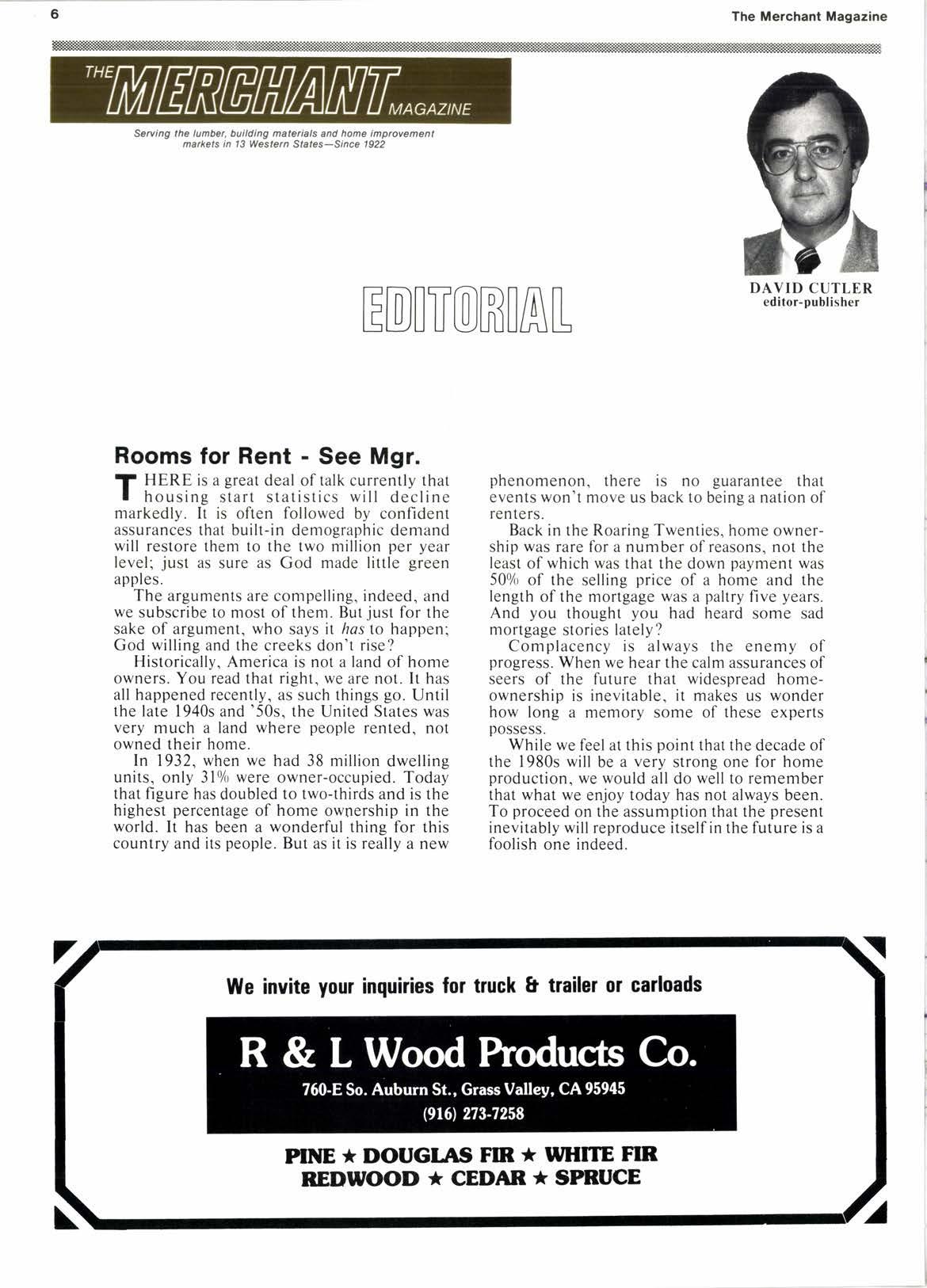
1 minute read
Notlu$ plywood tlmbers too
Rooms for Rent - See Mgr.
1' HERE is a great deal of talk currently that I housing start statistics will decline markedly. It is often followed by confident assurances that built-in demographic demand will restore them to the two million per year level; just as sure as God made little green apples.
The arguments are compelling, indeed, and we subscribe to most of them. But just for the sake of argument, who says it has to happen; God willing and the creeks don't rise?
Historically, America is not a land of home owners. You read that right, we are not. It has all happened recently, as such things go. Until the late 1940s and '50s, the United States was very much a land where people rented, not owned their home.
In 1932, when we had 38 million dwelling units, only 310/o were owner-occupied. Today that figure has doubled to two-thirds and is the highest percentage of home ownership in the world. It has been a wonderful thing for this country and its people. But as it is really a new phenomenon, there is no guarantee that events won't move us back to being a nation of renters.
Back in the Roaring Twenties, home ownership was rare for a number of reasons, not the least of which was that the down payment was 5006 of the selling price of a home and the length of the mortgage was a paltry five years. And you thought you had heard some sad mortgage stories lately?

Complacency is always the enemy of progress. When we hear the calm assurances of seers of the future that widespread homeownership is inevitable, it makes us wonder how long a memory some of these experts possess.
While we feel at this point that the decade of the 1980s will be a very strong one for home production, we would all do well to remember that what we enjoy today has not always been. To proceed on the assumption that the present inevitably will reproduce itself in the future is a foolish one indeed.










